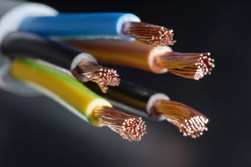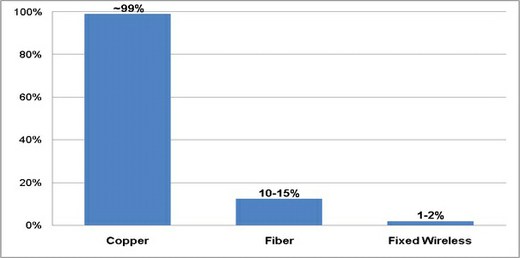|
|

By
Craig Clausen
and
Ed Gubbins
With Verizon rolling out 150 megabit-per-second broadband service and 4G wireless service on the march, the notion of broadband over copper wires might seem dated or lackluster. But for telecom service providers targeting small businesses, copper – and in particular, copper-based mid-band Ethernet services – continues to shape up as a sustained opportunity.
Yes, fiber is faster, and therefore perhaps sexier, than copper. But fiber is available to less than 20% of today’s small businesses, and deploying it isn’t cheap – a consideration that can’t be taken lightly in an anemic economy or amid a customer base notorious for pinching pennies. But set that point aside.
Large enterprises require high-
bandwidth services at the Fast
|
|
In contrast, small business users are mostly interested in plain-vanilla always-on Internet access. |
|



Copper (EoCu) is proving to be an
attractive alternative to multiple T1
scenarios in both price and scalable
bandwidth.
|
|
|
 Chart 1: Percentage of Commercial Buildings Served By Access Medium
Chart 1: Percentage of Commercial Buildings Served By Access Medium
|
|

Ethernet (100 Mbps) level and above
to create wide area networks for file
sharing and application access, as well
as to carry voice (as VoIP) and web
conferencing traffic. Their complex
systems also make extensive use of
remote storage and mirrored backup
for data recovery purposes, which
necessitates the use of enormous
point-to-point pipes. In contrast, small
business users are mostly interested in
plain-vanilla always-on Internet access
—it’s just that, more and more
frequently, they need more bandwidth
but do not want to pay the incremental
cost for a second (or perhaps more) T1.
And in this arena, Ethernet over
|
|

With T1 access over copper, throughput is a standard 1.5 Mbps per T1, whereas EoCu bandwidth using the same physical medium can deliver upwards of 40 Mbps—simply by means of a different access technology. While this is far less than the Gbps-range capability of a fiber strand, copper facilities are also ubiquitously available. EoCu allows SMBs that are “off-net” to tap into bandwidth speeds of up to 45 Mbps. And carriers are increasingly willing to deploy direct access EoCu solutions to SMB sites as a bridge to a time when more fiber might be available.
|
|
|






